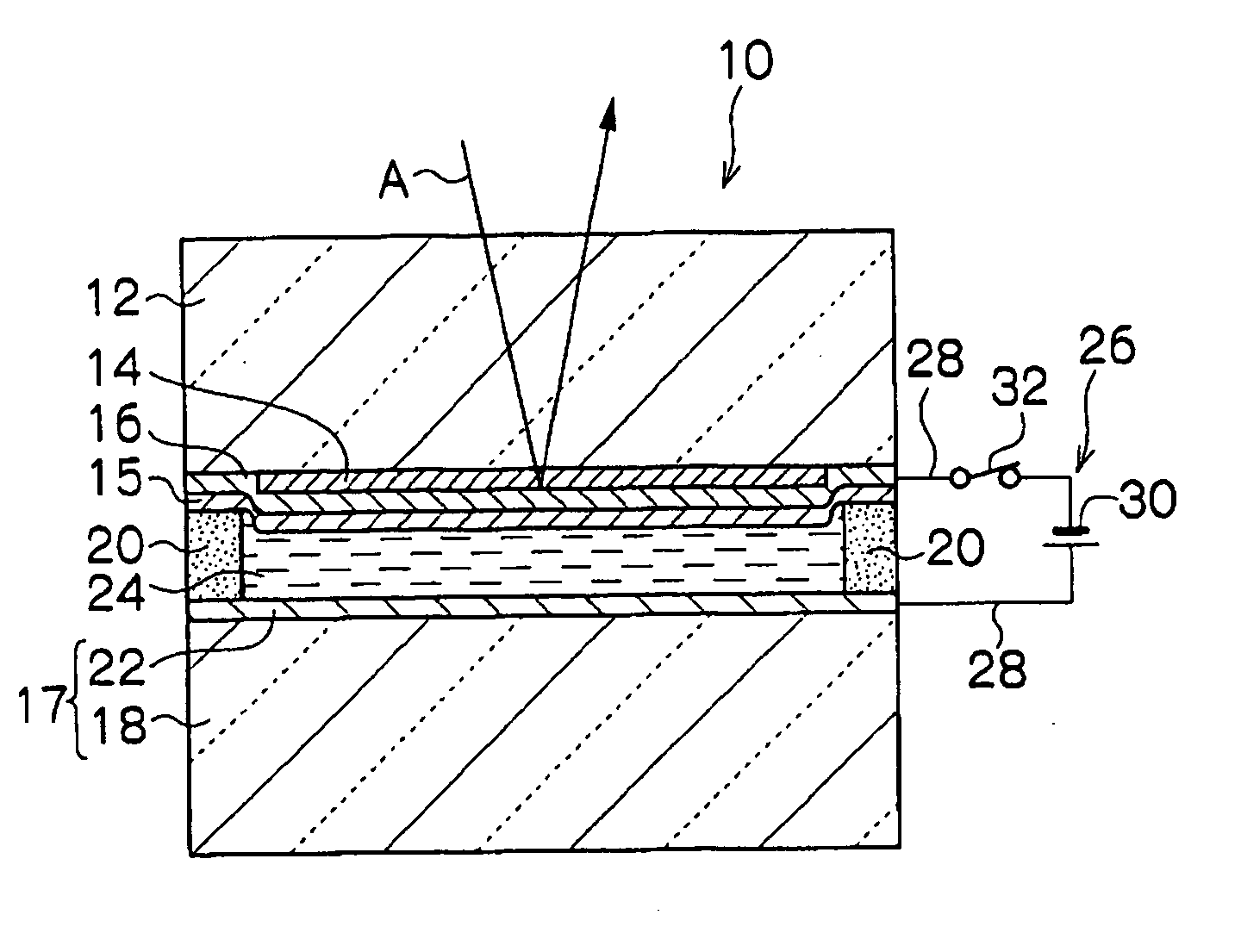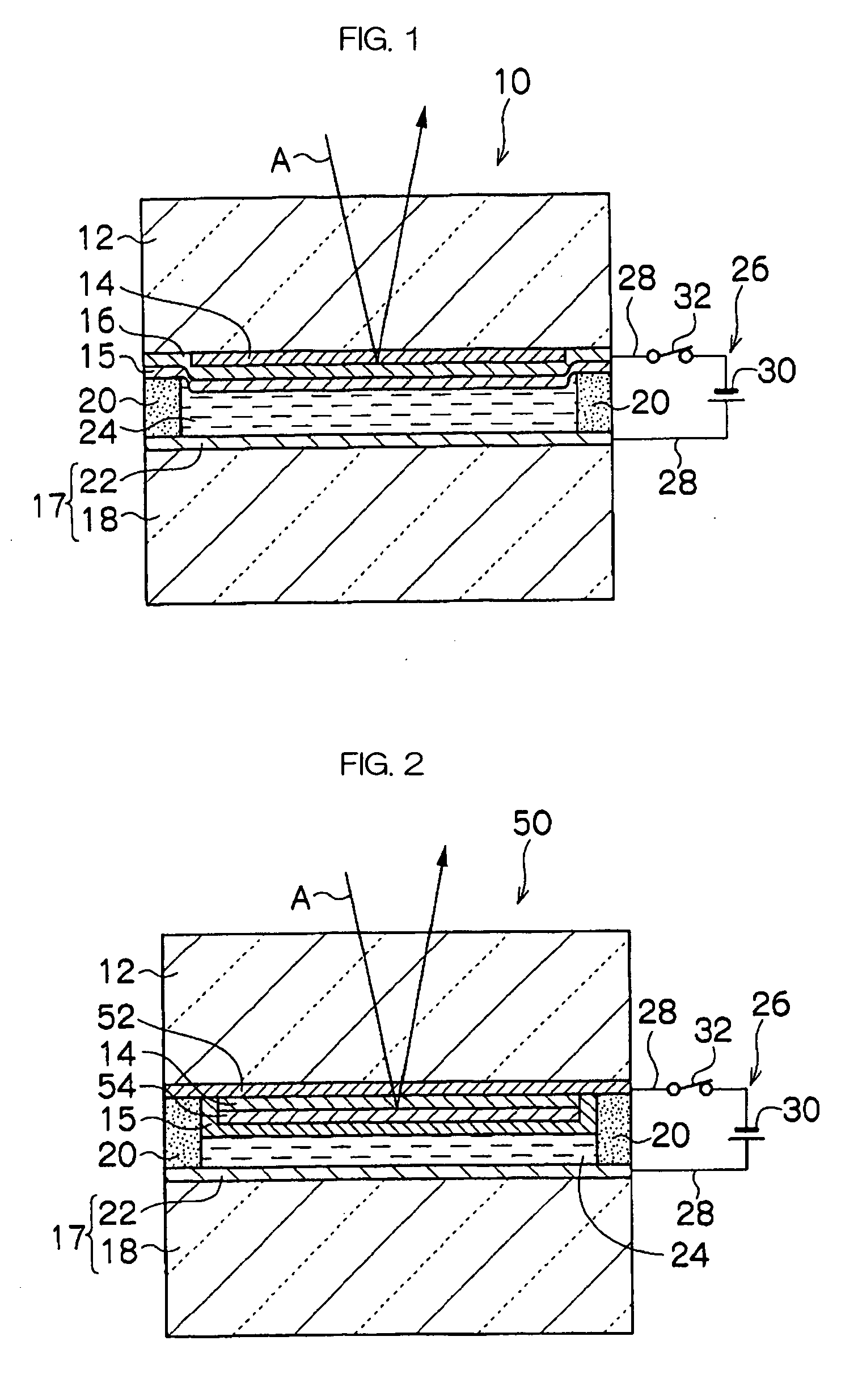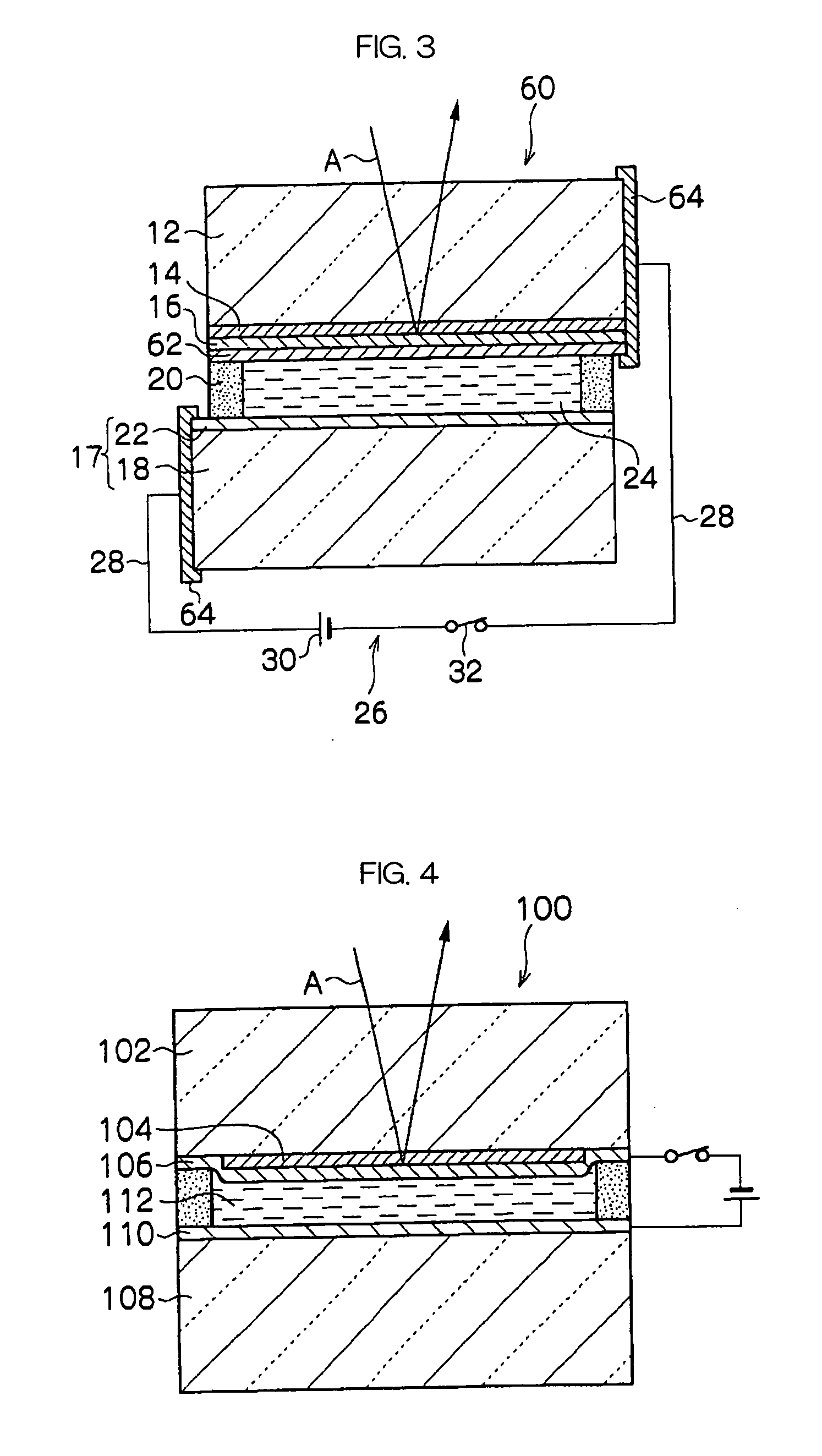Electrochromic mirror
a technology of mirrors and electrochromes, applied in the field of interior or exterior rear mirrors, can solve the problems of difficult manufacturing and high manufacturing cost, and achieve the effect of preventing the corrosion of the light-reflecting film
- Summary
- Abstract
- Description
- Claims
- Application Information
AI Technical Summary
Benefits of technology
Problems solved by technology
Method used
Image
Examples
example 1
[0058]FIG. 1 is a cross-sectional view illustrating the configuration of an electrochromic mirror 10 according to the first embodiment of the invention.
[0059] The electrochromic mirror 10 has a glass substrate 12 as its transparent substrate. The glass substrate 12 has an electrochromic film 14 that develops color reductively formed on the rear face (bottom surface in FIG. 1) by, for example, means of vacuum deposition in the form of a thin film. The material used for the electrochromic film 14 in the first embodiment is tungsten trioxide (WO3).
[0060] On the side of electrochromic film 14 opposite to the glass substrate 12, a conductive light-reflecting film 16 allowing transmission of hydrogen atoms and having electrical conductivity is formed as a thin film, for example, by means of vacuum deposition. Use of a noble metal in the platinum family such as platinum, rhodium, or palladium, alloys containing the same (e.g., an alloy of silver and an element in platinum family), or the...
example 2
[0075]FIG. 2 is a cross-sectional view illustrating the configuration of an electrochromic mirror 50 according to the second embodiment.
[0076] As shown in FIG. 2, the electrochromic mirror 50 according to the second embodiment has a configuration fundamentally the same as that of the electrochromic mirror 10 according to the first embodiment, but is different in the following features.
[0077] The electrochromic mirror 50 has a glass substrate 12 having a transparent electrode film 52 with electrical conductivity formed as a thin film on the rear face of the glass substrate (bottom surface in FIG. 2) by, for example, means of vacuum deposition. Examples of the material used for the transparent electrode film 52 include tin-doped indium oxide (ITO), fluorine-doped tin oxide (SnO2:F), antimony-doped tin oxide (SnO2:Sb), and the like.
[0078] An electrochromic film 14 similar to the electrochromic film 14 according to the first embodiment is formed as a thin film on the face of transpar...
example 3
[0091]FIG. 3 is a cross-sectional view illustrating the configuration of an electrochromic mirror 60 according to the third embodiment.
[0092] As shown in FIG. 3, the electrochromic mirror 60 according to the third embodiment has a configuration fundamentally the same as that of the electrochromic mirror 10, but is different therefrom in the following features.
[0093] In the electrochromic mirror 60, a dielectric film 62 having electrical conductivity and hydrogen ion conductivity is formed as a film on the side of conductive light-reflecting film 16 opposite to the electrochromic film 14, for example, by means of vacuum deposition. Favorable examples of the materials used for the dielectric film 62 include tin oxide (SnO2), fluorine-doped tin oxide (SnO2:F), antimony-doped tin oxide (SnO2:Sb), tin-doped indium oxide (ITO), zinc oxide (ZnO), aluminum-doped zinc oxide (ZnO:Al), titanium oxide (TiO2), titanium nitride (TiN), and the like.
[0094] In the electrochromic mirror 60, the gl...
PUM
| Property | Measurement | Unit |
|---|---|---|
| electrochromic | aaaaa | aaaaa |
| transparent | aaaaa | aaaaa |
| electrically conductive | aaaaa | aaaaa |
Abstract
Description
Claims
Application Information
 Login to View More
Login to View More - R&D
- Intellectual Property
- Life Sciences
- Materials
- Tech Scout
- Unparalleled Data Quality
- Higher Quality Content
- 60% Fewer Hallucinations
Browse by: Latest US Patents, China's latest patents, Technical Efficacy Thesaurus, Application Domain, Technology Topic, Popular Technical Reports.
© 2025 PatSnap. All rights reserved.Legal|Privacy policy|Modern Slavery Act Transparency Statement|Sitemap|About US| Contact US: help@patsnap.com



